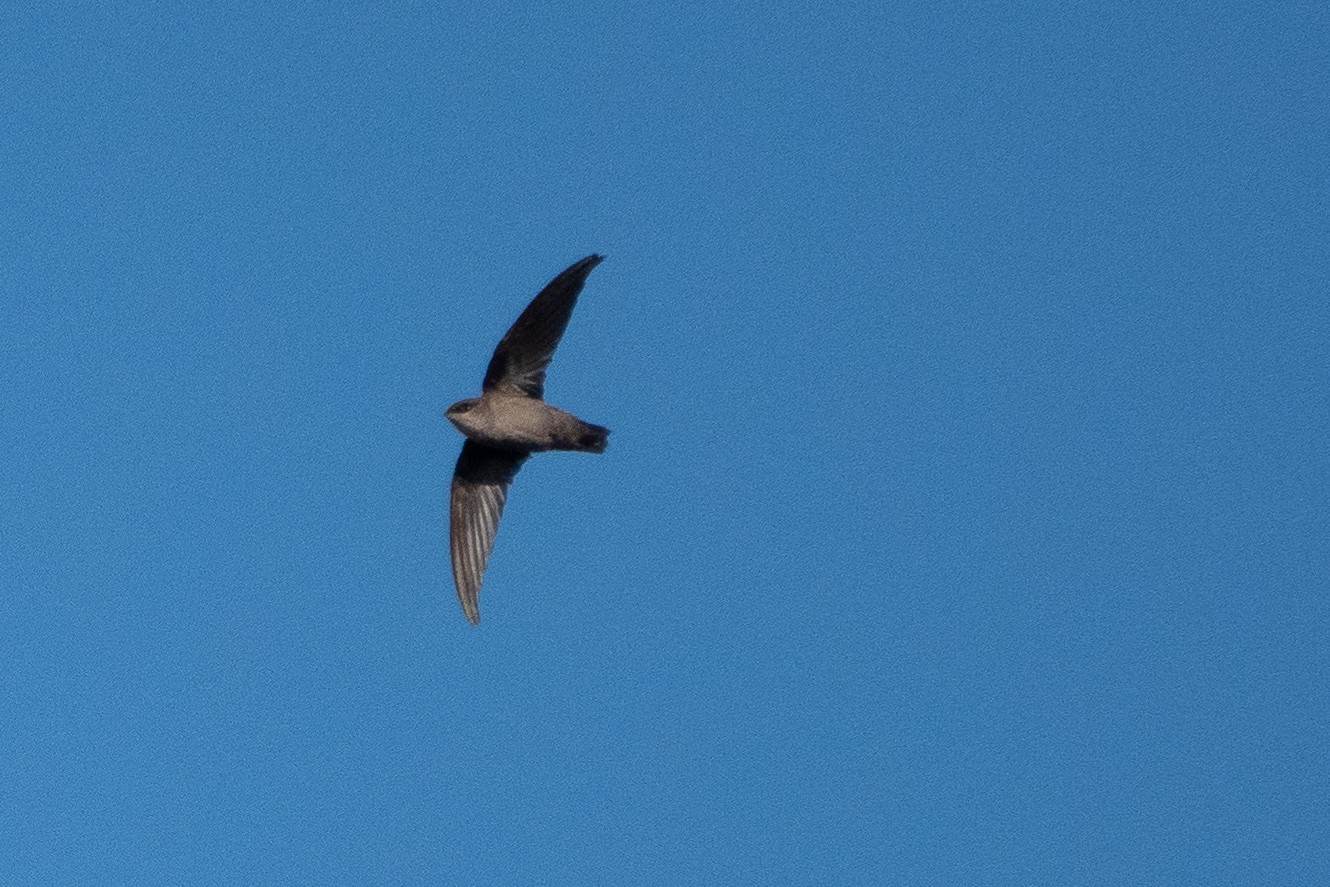Vaux's Swift
A species of New World Needle-tailed Swifts Scientific name : Chaetura vauxi Genus : New World Needle-tailed Swifts
Vaux's Swift, A species of New World Needle-tailed Swifts
Botanical name: Chaetura vauxi
Genus: New World Needle-tailed Swifts
Content
Description People often ask General Info
Description
This is a small swift, even compared to other Chaetura species, at 10.7 to 11.2 cm (4.2 to 4.4 in) long and weighing 18 g (0.63 oz). The northern populations are slightly larger at 11.5 cm (4.5 in), probably according to the Bergmann's Rule and/or migration requirements. It has a cigar-shaped body, crescentic wings and a short bluntly squared-off tail. The head, upperparts and wings are dusky black, and the underparts, rump and tail coverts are greyish brown. The throat is paler grey, becoming whitish in northern birds. The sexes are similar, but juveniles have dusky bases to the throat feathers. 
Size
10 - 11 cm
Colors
Black
Gray
Life Expectancy
5.1 years
Nest Placement
Tree
Clutch Size
3 - 7 eggs
Feeding Habits
Vaux's Swift predominantly feed on a diverse array of aerial insects and spiders, captured during flight through adept maneuvering. Their diet includes flies, bees, ants, and various small beetles, among others. These birds may forage alone, in pairs, or in flocks, often over areas rich in food sources. Vaux's Swift are also known to perform over 50 feeding sorties daily when providing for their young, creating and regurgitating insect boluses at the nest.
Habitat
Vaux's Swift's habitat encompasses mature and old-growth coniferous or mixed forests with large, hollow trees needed for nesting. Favoring redwood, fir, hemlock, and cedar environments, their habitats span from coastal lowlands to highlands, and they adapt to urban settings using communal roosts during migration. They prefer regions with abundant nesting cavities and feed in forest openings and above fields and urban localities.
Nest Behavior
Vaux's Swift's nesting period involves both male and female in building the nest, followed by egg-laying. They provide parental care, jointly tending to the eggs and their subsequent brood within the snug tree cavity or chosen nesting site.
Nest Characteristics
Vaux's Swift builds nests in tree hollows or occasionally in chimneys or under rooflines. Both sexes construct the nest using twigs glued together with saliva. The resulting structure is a sloppy semi-circular array, roughly 4 inches wide and 2.4 inches tall, with a cup about 3.2 inches wide and 1.2 inches deep.
Dite type
Insectivorous
People often ask
General Info
Feeding Habits
Bird food type
Behavior
Vaux's Swift's are highly social and communicate frequently, especially upon arrival at their breeding grounds in spring. These birds are known for their swift and agile flight, engaging in aerial courtship displays, including an unusual V-shaped glide. Unlike many birds, they do not establish territories and are tolerant of others nesting closely. Both parents are involved in feeding their young, with occasional help from additional adult swifts, suggesting possible cooperative breeding behavior. Vaux's Swift feed their offspring near the nest and use the same nesting site for roosting long after the young have fledged. Before migrating, they form large flocks, roosting en masse in urban locations often in chimneys, creating a remarkable wildlife display, celebrated by local communities. In their winter habitats, their behaviors mirror those of the breeding season, though less is documented about their activities during this time.
Distribution Area
Vaux's swift breeds in highlands from southern Alaska to central California and from southern Mexico, the northern Yucatán Peninsula, to eastern Panama and northern Venezuela. The United States' populations are migratory, wintering from central Mexico south through the Central American breeding range. The resident breeding birds in the southern part of the range are sometimes considered a separate species, dusky-backed swift, Chaetura richmondi. Preferred habitats include old growth coniferous or deciduous forests consisting of coniferous and deciduous vegetation; requires large, hollow trees for nesting. 
Species Status
Not globally threatened.
